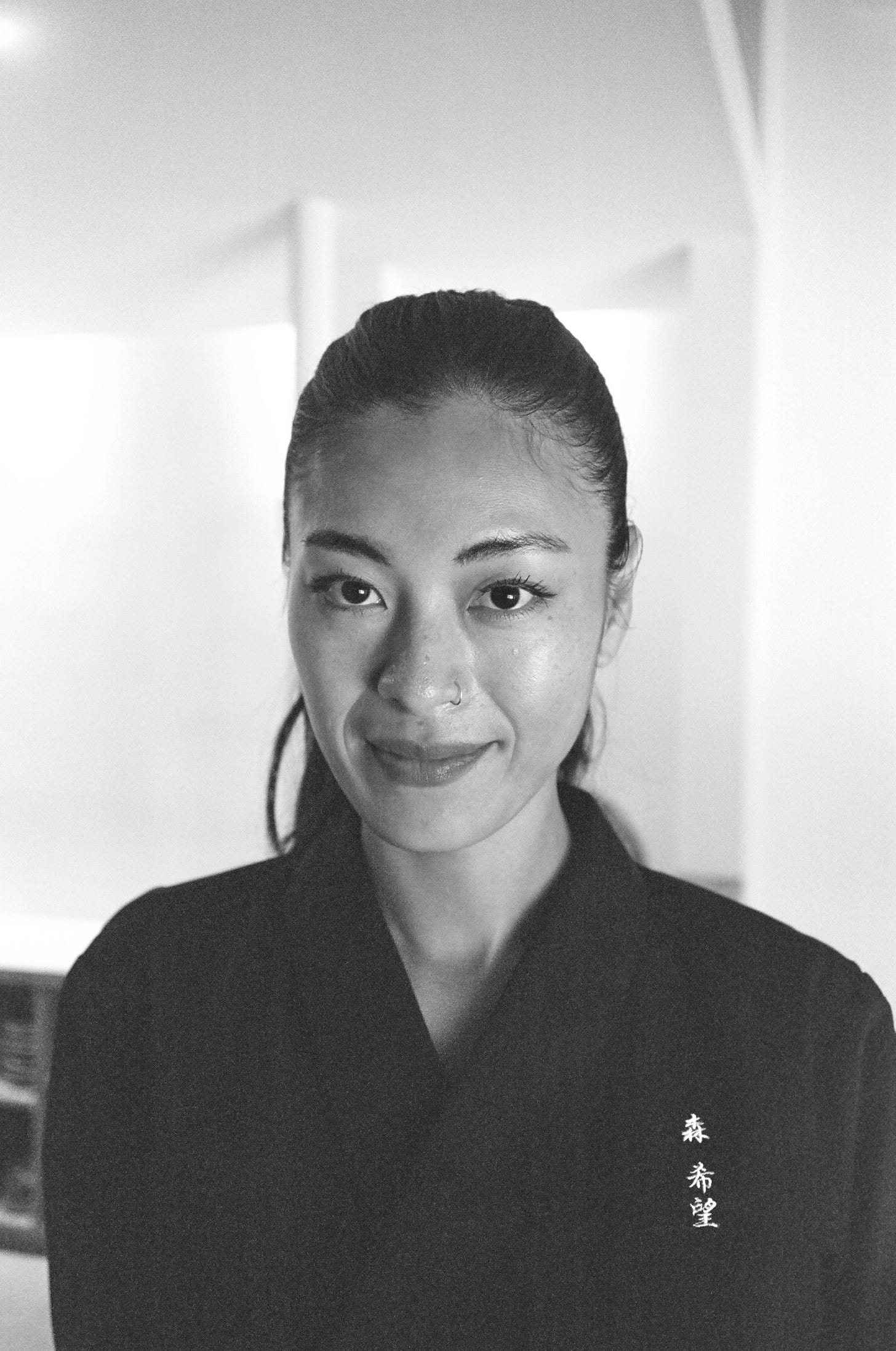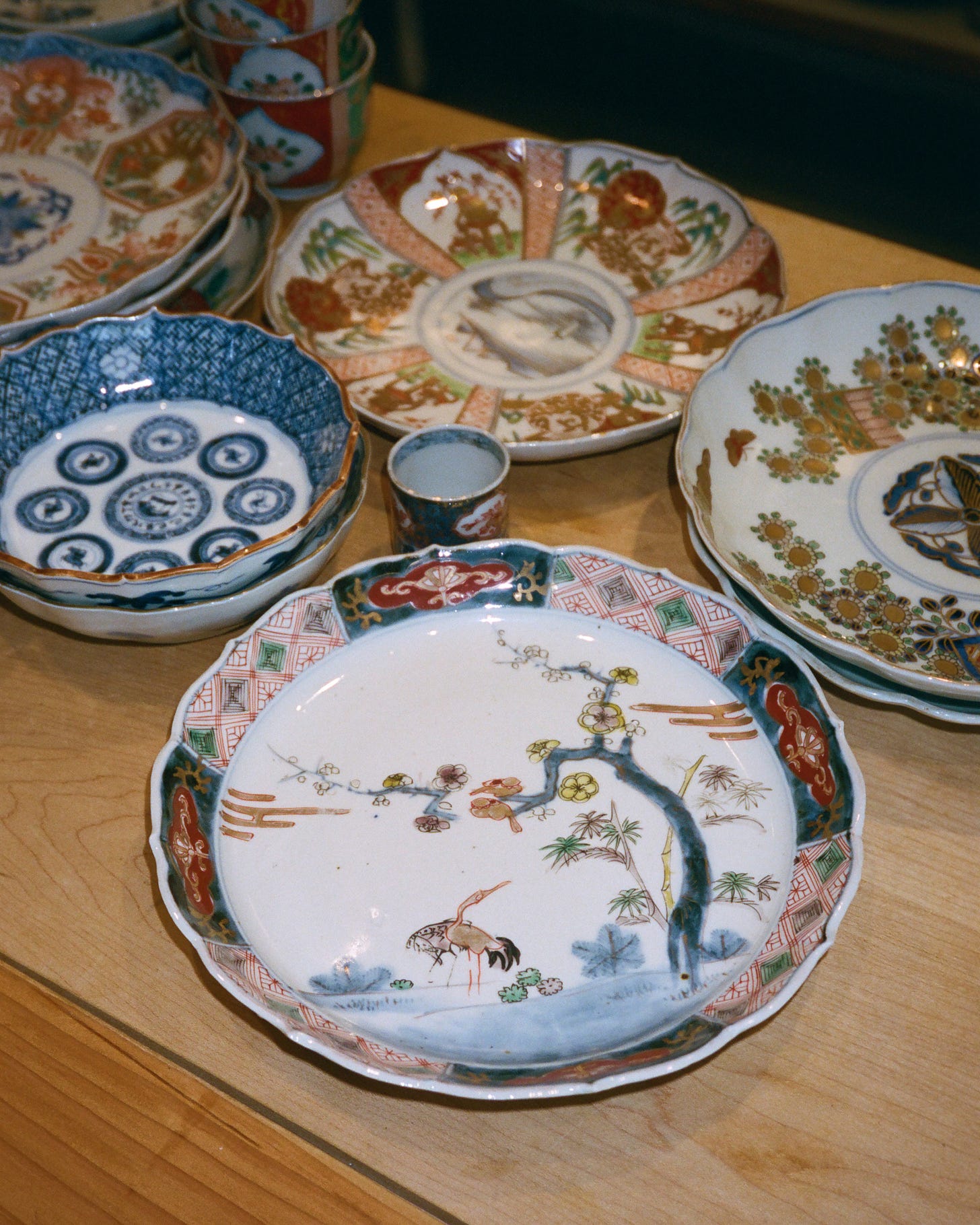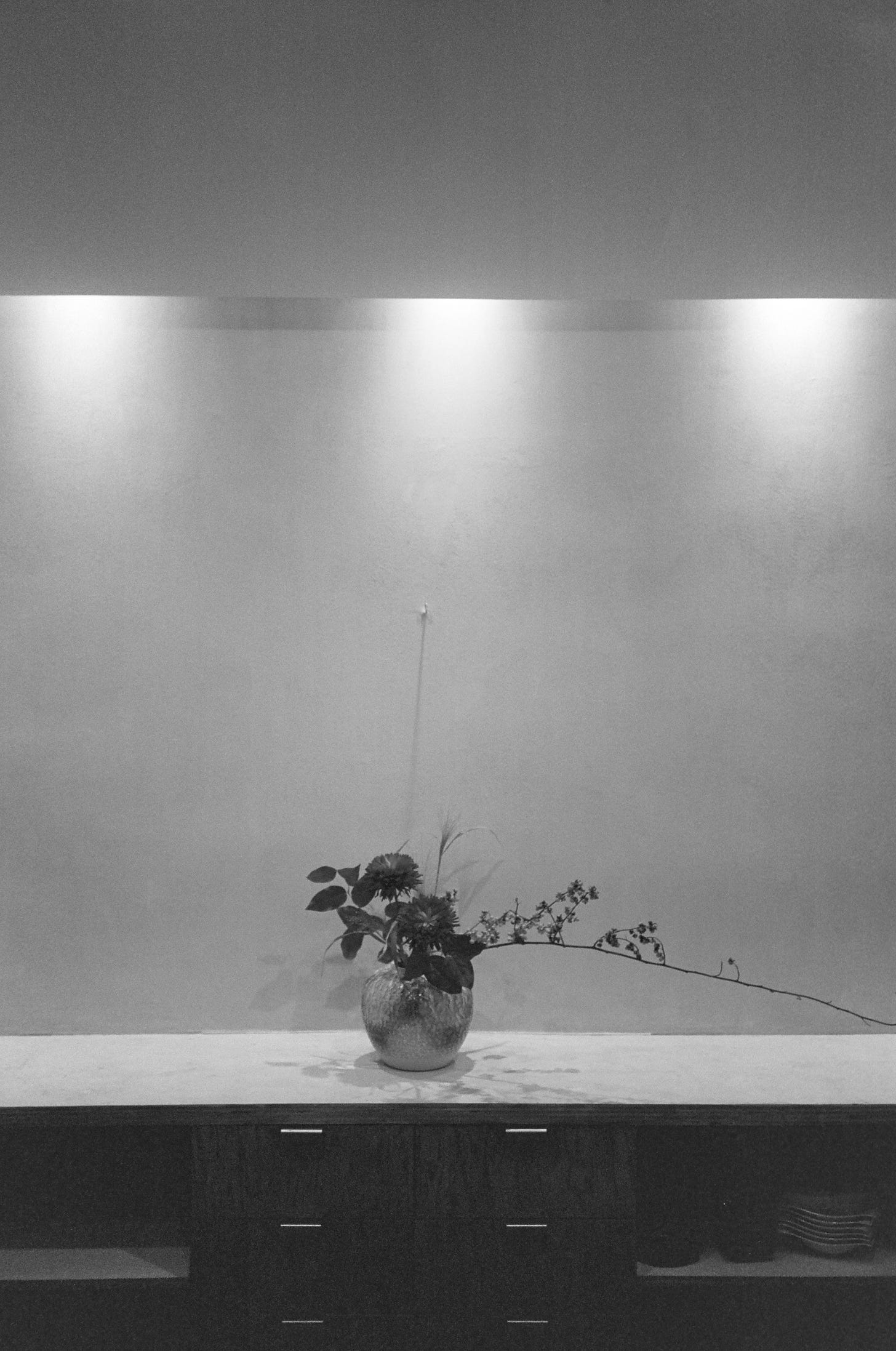Nozomi Mori Set Out To Be a Great Sushi Chef. She Became a Trailblazer.
From behind her impressive eight-seat omakase counter in Sawtelle, she is quietly paving the way for female sushi chefs—in L.A. and beyond.
Photographs by David Gurzhiev
Nozomi Mori opened her eponymous omakase restaurant in March with a simple premise. She planned to source top-quality fish and serve her favorite cuts of sushi for guests with the utmost hospitality. She had orchestrated her space—a spare, serene room tucked behind closed doors on a bright corner of Sawtelle—so that an eight-seat counter would be the anchor. From behind it, she would welcome one seating per night, at 7 p.m., Tuesday through Saturday. Being a woman in the deeply male-dominated field of sushi wasn’t something that Mori thought much about. She hired an all-female team, a mix of culinary and front-of-house talent—including a sous chef, Yuko, who formerly worked in pastry at Eleven Madison Park—to help prepare her omakase and service guests. Still, at first, she thought it was merely a coincidence that no men were on staff.
“I was open to hiring any gender,” Mori says. “So many interviewees came in.” Through a translator, she added, “Once I started to hire and work with the team, then I noticed that maybe women have a better sense of the hospitality I want to deliver.” In Japan and around the world, female sushi chefs are rare. Sexist myths, such as that menstruation harms the palate, have served as reasoning for why. The reality, Mori says, is that while it’s slightly easier than it once was for women to become sushi chefs, “men have power in Japan, so the top jobs are always [given to] men. Not only in sushi but in everything.”
Today, in Los Angeles, however, Mori has been welcomed with open arms. Prominent members of the food media have come in to dine. Big-name chefs have taken a seat at her counter. The quirky Michelin-starred chef Shusaku Toba, who has eight restaurants in Tokyo, flew in from Japan to collaborate with Mori on a dinner. And on a recent Sunday, when the restaurant was supposed to be closed, she opened at the request of a handful of L.A.’s most acclaimed sushi chefs—from places like Sushi Kaneyoshi, Shunji, and Kogane—who altogether came in for omakase. “It was fun, they were drinking, it seems like they are very curious about me,” she says.
Mori was born in Hyōgo, a port city just west of Osaka. She grew up eating sushi alongside other Japanese foods, but it wasn’t her love for the cuisine, or even for fish, that drew her to become a sushi chef. “I’m more of a meat person,” she says, laughing. “I like steak and barbecue.” Rather, she fell in love with the experience of serving guests from behind a sushi counter. Mori began her career in Tokyo, working as a store clerk for luxury fashion brands, including Gucci and Issey Miyake, where she learned how to artfully present expensive clothing and cater to the desires of wealthy clients. Then, she took time off to travel around the world, ultimately deciding to move to Los Angeles. “I really liked the weather, it’s not cold and rainy [like Japan]. And the people are very nice, very accepting of foreigners,” she says. During her travels, Mori was surprised to see so many sushi restaurants. She didn’t realize how globally popular it had become.
In 2018, she landed in L.A. “I interviewed at a sushi restaurant as a waiter, and they asked me, ‘Do you want to be a chef?” And I was like, ‘Yeah, why not?’” Mori recounts. It was a neighborhood restaurant that served Americanized sushi, and she recalls making hundreds of California and dragon rolls. When they put her behind the counter in front of guests, she knew she wanted to be a sushi chef. “American people are very direct with their feelings,” she says. “If it’s really good, they say, ‘Amazing,’ or something like that. In the kitchen, I didn’t think I’d be a chef, but across from the customer, I can see the expression on their face, the warmth. It’s really empowering.”
Mori’s next gig was at Moto Azabu in Marina Del Rey, where she learned how to make authentic sushi. “They have four or five old Japanese guys working there in their 60s and 70s, and they taught me how to treat fish,” she says. During her four years there, she was struck by how much fish was wasted. The sushi chefs would pre-cut their fish in anticipation of a busy service, and then when the restaurant was slow, they’d have to throw away anything unused. The sad sight motivated her to work towards opening an omakase restaurant, where she could organize exactly how much fish she’d need each night. But first, she had to learn how to prepare omakase.
At Sushi Ginza Onodera, the pristine, two-Michelin-starred restaurant in West Hollywood with a price tag of $400 a head, Mori was taught how to source high-quality fish and organize omakase. Then, she was ready to open her own spot. Over the five years she spent working in sushi restaurants and simultaneously dining at them, she began to understand how she’d do things differently, her way. She had noted elements of hospitality that she liked and disliked and realized her preferences for certain fish and ways of serving it. When she heard that the space that now houses Mori Nozomi was being vacated by its former sushi chef, she leaped.
Now at Mori Nozomi, Mori serves a $250 omakase to eight guests five nights a week. Her style is grounded in the Japanese philosophy of wabi-sabi; she aims to showcase the beauty of raw, seasonal ingredients and to honor traditional preparations with a personal, contemporary spin. And she does so quite successfully, sourcing fish from Japan and produce from the Santa Monica Farmers’ Market. But her path as a restaurateur hasn’t been without bumps. When she began buying fish, she sensed that importers were trying to trick her into purchasing lower-quality product. “I’m a female, right? So sometimes, I feel like they [underestimate] me. I’ve had to call them and say, ‘I know fish,’” she says.
“I’m a female, right? So sometimes, I feel like they [underestimate] me. I’ve had to call them and say, ‘I know fish.’”
Upon entering Mori Nozomi for dinner, you’ll find Mori behind a two-level blonde wood counter, mixing a generous glug of vinegar into a steaming hot batch of shari (sushi rice). As the meal unfolds, Yuko grills certain courses on a binchotan, while Mori shapes nigiri and presents several preparations of Hokkaido hairy crab. Because she loves bluefin tuna the most, it’s the first piece of sushi in her omakase, its fat melting against the still-warm shari, followed by three more pieces later on. Instead of scoring squid, a common technique used by omakase chefs, Mori makes shavings, which create a sweeter flavor profile. She employs a similar method for her scallop, slicing the plump mollusk into a cross-stitch that elegantly drapes over rice.
Perhaps most distinct is her tamago, the Japanese omelet served toward the end of a sushi meal. It is well-known amongst sushi enthusiasts that you can judge the quality of a sushi restaurant by its tamago. “Because with fish, if you’re using high-end fish, it’ll always be good, but with tamago, you have to season it and have skill,” Mori explains. While many sushi chefs specialize in cold, cake-like tamago, she prepares her tamago fresh and serves it piping hot. The result is loose and juicy, with a powerful umami flavor that stems from her use of dashi stock. This style, called dashimaki, comes from the west side of Japan, where Mori grew up.
The quality of the omakase at Mori Nozomi speaks for itself. Yet what makes Mori’s restaurant fundamentally unique is the atmosphere. When I first dined at the restaurant, I noticed a palpable sense of warmth, a striking feeling in a formal omakase restaurant. Diners were socializing with one another, and every so often, Mori and her staff would chime in. Laughter abounds. Restaurant recommendations were exchanged. (Mori counts Pizzeria Sei, Hakata Izakaya HERO, and Tsuruhashi among her go-tos.) Like every night at Mori Nozomi, the meal ended with a tea ceremony and beautiful homemade wagashi, a finale with an apparent feminine touch. “Good sushi is very important,” Mori says. “But good service is more important, so that customers think, ‘I want to come again.’”
At the end of our interview, Mori shared that she recently heard from a woman who said she had inspired her to become a sushi chef. She added that although she didn’t understand her gender to be remarkable back in March, she’s found a calling as a role model for women who aspire to be sushi chefs. Now seven months into operating her omakase restaurant, Mori has been most surprised by her clientele and the ripple effect of their response. “Some nights, we have all female customers,” she says. “Usually at high-end sushi restaurants, it’s couples [celebrating] anniversaries or something special, but I have so many female customers. And they all tell me that they want to support me. I feel very [welcomed] in Los Angeles.”









